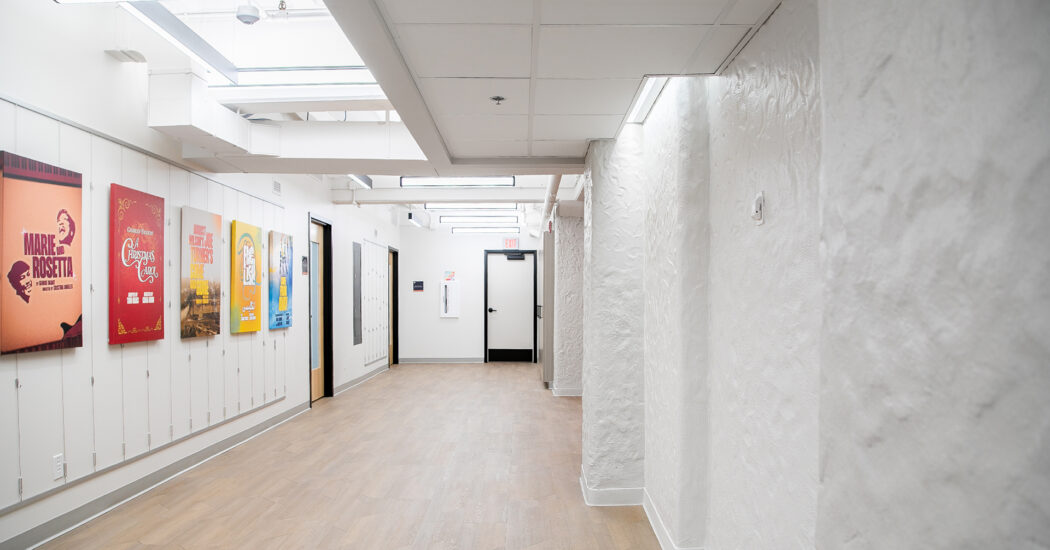Are You Getting the Energy Rebates You Deserve?
-
Category
Innovation -
Posted By
Bill Gruen -
Posted On
Dec 03, 2019
Boost your budget by getting paid for energy efficient upgrades
We all want to save money, and seeking energy rebates for your engineering work is one way to add dollars back into your bottom line.
If you are planning renovations in your facility, making system upgrades, or putting up a brand new building, you probably know that designing these spaces to be more energy efficient is in your best interest. It reduces the ongoing cost of running the building, saving you money year after year.
What you may not know is your building’s improved energy efficiency could entitle you to cash incentives.
What are Energy Rebates?
We live in a highly powered world. Our homes, offices, schools, hospitals, factories—our entire communities—use an overwhelming amount of electricity. This puts a strain on the electrical grid, which wasn’t originally designed to operate at today’s level.
In an effort to reduce the demand on the electrical grid and avoid building more power plants, utility companies and the government are incentivizing customers to use less energy. Incentive programs pay businesses cash for designing new buildings or upgrading existing buildings and equipment to be more energy efficient or to use renewable energy sources.
Incentives are significant benefits to building owners because they can offset the cost of installing more energy efficient equipment, which often costs more upfront but provides cost savings over time. This means, with rebates, you can install energy efficient equipment and fixtures at closer to the cost of “standard” versions, then reap the savings in building operations costs. It’s a win-win!
Types of Utility Energy Rebates
Typically, utility companies, or their designated subcontractors, administer energy rebate programs. The rebates you qualify for will depend on what type of project you’re doing, where your project is located, and what rebates or incentive programs are offered by your utility company or relevant parties.
No matter who is administering the incentive programs, there are three primary types of energy rebates you may qualify for:
1. Prescriptive
Prescriptive energy rebates are typically offered for each energy efficient piece of equipment or fixture you install—a one-for-one replacement or retrofit. You must apply for prescriptive rebates after project completion, but within 60-90 days of completion. There is often a per-project cap for prescriptive rebates. This can range from $10,000 to $50,000, depending on what your utility company offers.
Popular measures that qualify for prescriptive energy rebates include:
- Interior/exterior lighting
- Chillers
- Boilers
- Rooftop units
- Variable Frequency Drives (VFDs)
- ENERGY STAR kitchen equipment
- Occupancy sensors
2. Custom
Custom energy rebates are offered for things not covered by prescriptive rebates. This might include more complex renovations, involve multiple systems, or include a building analysis approach. You must apply for custom energy rebates before executing the contract for the work or purchasing materials. Custom rebates usually have a per-project cap, but some programs will reimburse $100,000 or more based on the size and scope of the project.
Popular measures that qualify for custom energy rebates include:
- LED lighting (not for one-for-one replacement)
- HVAC measures not covered by prescriptive program
- Building controls
- Compressed air systems
- Energy studies and retro-commissioning
- Industrial processes
3. New Construction
New construction energy rebates are offered for new construction projects or major renovations. You must apply for custom energy rebates before executing the contract for the work or purchasing materials. Like custom rebates, there is usually a per-project cap, but some programs will reimburse $100,000 or more based on size and scope of the project.
Popular measures that qualify for new construction energy rebates include:
- LED Lighting
- HVAC
- Building envelope
- Building controls
- VFDs
- Windows and glazing
Utility companies may offer financial assistance for an energy efficiency study, which falls under the custom rebate category. An energy study assesses your building’s current performance and provides recommendations for ways to optimize energy use. Any changes you make as a result of the study would then qualify for the appropriate prescriptive or custom rebates.
How Do I Get Energy Rebates?
The process of maximizing your energy rebate dollars starts in the planning and design phase of your project—or if you are doing a remodel, potentially even earlier in the energy assessment of your existing building. Based on your budget and goals, your engineering team can help you choose the most efficient equipment and collaborate with architects to design with optimal energy performance in mind.
Application Process
When and how you must apply for rebates depends on your project and the type of incentives you are seeking.
For prescriptive rebates, once the project is done, you will need to complete the appropriate technology application (e.g. lighting or HVAC) and attach the itemized invoice and the W-9 of the payee. On the application, you will designate the payee, as the payment may be assigned to the contractor or the rebate administrator. You will typically receive the incentive within 30 days of submitting a complete application.
For custom and new construction rebates, you will need to apply prior to purchase and installation of equipment. Completing a custom rebate application will generally entail outlining the project scope and estimating costs and savings based on the building’s existing condition. New construction rebate applications will ask you to detail the scope and scale of the new building, as well as the technologies and control strategies being employed. You may need to submit a building energy model, too.
Other documentation you will need to provide include the architectural, mechanical, and electrical construction drawings, along with the COMcheck report. You may be asked for additional documentation on some applications, but these are the standard basic submittal requirements.
No matter which type of rebate application you are completing, you will typically receive payment after the project is complete and the utility company verifies the equipment is installed and operating according to the design.
Energy Rebate Assistance
The process of seeking out, applying for, and tracking the rebates through payment is time consuming and tedious. Even if you have the time, you may not have someone on staff who understands all the rules and requirements. This is where an energy engineering partner can be valuable.
Our team manages the energy rebate process for our Owners from start to finish. In fact, we’ve helped obtain over $1 million in energy incentives in the past two years. Our familiarity with the requirements and our specialized software allow us to complete the process in a fraction of the time. We gather the information we need, find the incentives you qualify for, complete and submit the applications, and track their status until you receive the check.
Need help? Have questions? Contact our energy experts for more information.








